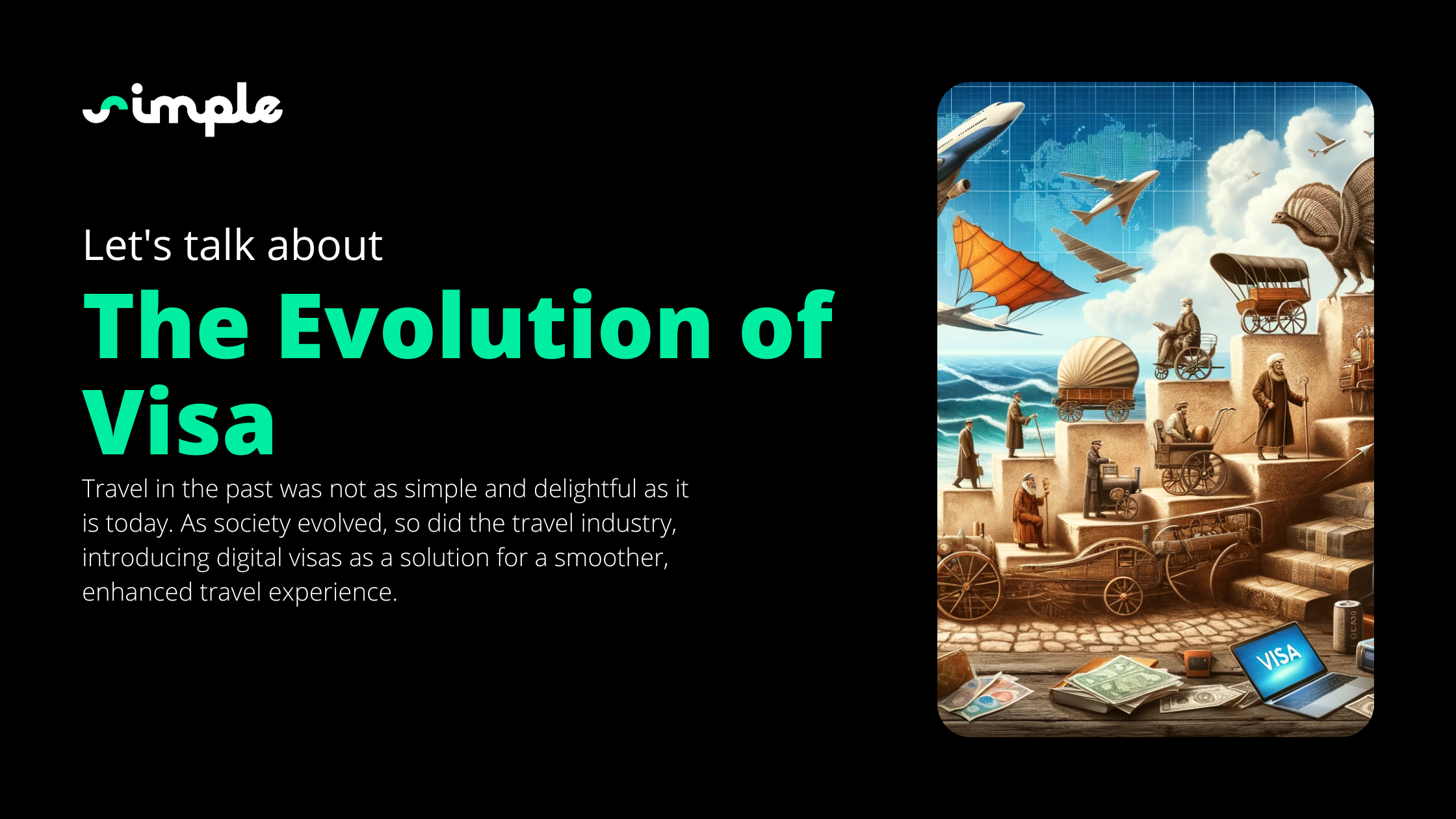The Digital Visa: Navigating Tomorrow’s Horizons

A throwback in the travel history
Travel in the past was not as simple and delightful as it is today. As society evolved, so did the travel industry, introducing digital visa as a solution for a smoother, enhanced travel experience.
At an ancient period, people associated travel with danger, as it was risky due to our limited knowledge of the Earth. It was adventure, not knowing what might happen if one took the risks to explore the World. As time passed, roads were constructed, and people began to explore land next to their own. Trade between neighboring communities started to emerge, leading to new horizons and villages.
With the birth of the Age of Exploration, more traffic saw the light. There was a human desire to be the first to discover new lands to impose the power of their own country. European aristocrats coveted the opportunity to travel the world, considering it a “rite of passage”.
During the 19th century, the machinery of industrialization just started to boom. Everything started to accelerate; steamships and railways became faster, easier, and safer. Thanks to the emergence of mass tourism, the perspective on travel changed; it became a much safer and relaxing experience.
The invention of airplane revolutionized the world of travel. The long-distance destinations became accessible within a few hours, making travel available to everyone. The travel industry shifted from a luxury to a more commonplace activity.
In our era, more than 10% of the population has flown. Globalization is a significant theme in our society, and cultural diversity is increasingly prevalent. People move across borders for work, education, tourism, and various other reasons. The ease of international travel has contributed to a more interconnected and interdependent world.
In the technology sphere, especially with the internet and smartphones, travel has been drastically altered. From online booking platforms to navigation apps, and e-visas, technology has made travel more accessible, efficient, and personalized for everyone.
About Digital Visa
The traditional visa
Initially, visa served as diplomatic tools, controlling the movement of people across borders. As the travel industry experienced explosive growth in recent centuries, countries found it necessary to regulate migratory flows. The aim was to formalize entry through a structured application process and to keep a comprehensive record of individuals entering the country. This process was conducted through paperwork or face-to-face interactions that involved asking a series of questions, giving rise to the concept of the visa.
However, as the world evolved, so did the concept of visas. The digital revolution became an initiator for change, transforming these paper-based procedures into electronic processes.
The solution for the customers’ headache: the digital visa
The integration of digital technology into the visa ecosystem has been revolutionary. Since Australia launched its first e-visa in 1996, countries that recognized the significant turning point in the digital world followed suit. The number of countries utilizing e-visas has increased rapidly since then. This approach addressed the issues of time, money, and concerns associated with traditional paper applications. Cumbersome procedures were not only a source of frustration for customers but also had a negative impact on the economies of countries.
Electronic visas (e-Visas) have streamlined the application process, providing convenience for travelers and efficiency for immigration systems. The shift towards digital visa application, enhances security measures, minimizing the risks of fraud and identity theft.
Future perspective evolution for digital visa
Looking ahead, the goals of digital visa are poised for further evolution:
1. Enhanced Efficiency:
The future of digital visa lies in leveraging artificial intelligence and advanced data analytics to expedite processing times. The aim is to create a seamless and efficient experience for travelers, reducing wait times and administrative burdens.
2. Smart Borders:
Digital visa systems are moving towards integration with smart border technologies. Biometric authentication, facial recognition, and other cutting-edge tools will enhance security while expediting the movement of legitimate travelers.
3. Global Collaboration:
The future envisions increased international collaboration in digital visa systems. Shared databases and standardized procedures will promote smoother cross-border movements, fostering global cooperation and understanding.
4. Digital Identity:
As digital identities become more prevalent, visas are likely to evolve into an integral part of an individual’s digital profile. This shift will contribute to a more comprehensive and secure travel experience.
5. Environmental Sustainability:
Digital visas align with broader sustainability goals by reducing paper usage and minimizing the environmental impact of traditional visa processes. The future of visas involves a commitment to eco-friendly practices.
The digitalization: a journey of innovation
In the history of visas, the digitalization journey is a testament to adaptability and innovation. As we look to the future, the goals of visas extend beyond simplifying the travel headache. They embrace a vision of a connected world, where technology not only expedites processes but also is privileging global harmony. The digital evolution of visas is a chapter in the story of human progress, marking a commitment to a future where boarders, both physical and digital, are bridges rather than barriers.